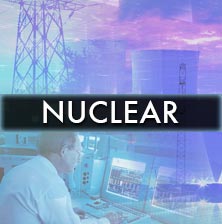The following is a small selection of items recently published by EPRI. To view complete lists of your company-funded research reports, updates, software, training announcements, and other program deliverables, log in at www.epri.com and go to Program Cockpits.

In power plant operating rounds, personnel walk through assigned areas and inspect equipment and processes, record parameters, and communicate abnormal conditions. This report discusses various aspects of operator rounds, including fundamentals, scheduling, best practices, and technologies.

The EPRI-supported Aerosol Research and Inhalation Epidemiology Study, conducted in five metropolitan areas in the United States, is one of the largest studies ever conducted to assess the acute health effects of air pollution.

In some parts of the United States, background ozone (ozone produced by pollution from outside the U.S. and from natural events) can represent a large fraction of the ozone concentration and result in exceedances of federal air quality standards. This research discusses scientific understanding of the magnitude, spatial variation, temporal trends, and source apportionment of background ozone in the United States.

Air quality and air dispersion modeling is used to establish regulatory compliance of emission sources. This report examines the state of the science of air quality modeling, modeling R&D, and the latest improvements.

This is the first revision of EPRI guidance on implementing aging management programs for cables in nuclear plants. Topics include identifying adverse environments and conditions and taking action in dry and wet environments.

This report provides guidance for nuclear plants to prepare for reduced radiation dose limits for the lens of the eye.

This report evaluates the technical and economic feasibility of automating chemical/radiological sampling in nuclear plants.

Using permanently installed sensors for structural health monitoring of nuclear power plant components can reduce costs associated with nondestructive evaluation inspections while providing better information. This research identified two applications in which structural health monitoring might provide value: gas void detection and pitting in heat exchanger interconnection piping.

This report is a comprehensive source of insights and experiences to support utility decision makers in transitioning nuclear plants from baseload to flexible operations.

Utilities are increasingly considering the use of poles made of fiberglass-reinforced polymer (also referred to as composite poles). Because field experience with these poles is limited, many utility vendors have concerns about attaching hardware. To address these concerns, this report discusses the various pole constructions and mechanical properties; details on available hardware and manufacturer recommendations; situations in which electrical performance is of concern; loading as a result of hardware; and more.

This report is an updated edition of the Underground Transmission Systems Reference Book, commonly known throughout the industry as “the Green Book.” It provides a desk and field compendium on the planning, design, manufacture, installation, testing, operation, and maintenance of underground transmission cable systems.

Electric utilities worldwide are deploying a wide range of technologies for transmission and distribution systems and advanced metering infrastructure. In 2017, EPRI surveyed utilities about systems installed or planned over the next five years, with a focus on opportunities, benefits, and challenges associated with new technologies and data sources. EPRI administered the same survey in 2013. This update was intended to reveal changes in utility readiness for big data.